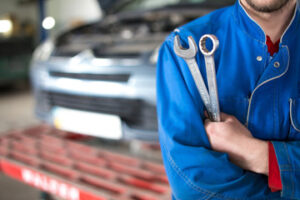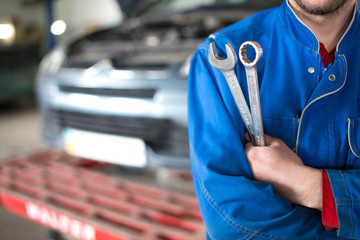San Clemente Auto Repair plays a crucial role in keeping vehicles running smoothly. As technology advances, repair methods have also evolved. Modern vehicles require specialized tools and techniques for proper maintenance. Understanding these changes ensures better performance and longevity.
Vehicle diagnostics have become more sophisticated. Advanced systems can detect issues before they become major problems. Repair professionals rely on software and sensors to pinpoint faults. Early detection reduces repair costs and prevents further damage.
Routine maintenance remains the foundation of vehicle health. Oil changes, tire rotations, and brake inspections are essential. These simple tasks prevent larger issues from developing. Consistent care extends the lifespan of any vehicle.
Electronic components have become more complex. Modern vehicles rely on integrated circuits and sensors. Electrical failures can disrupt performance and safety. Repairing these systems requires specialized knowledge and equipment.
Hybrid and electric vehicles present unique repair challenges. High-voltage systems demand caution and expertise. Repairing battery packs and electric motors involves precision. Proper handling ensures safety and performance.
Suspension and alignment issues affect driving comfort and safety. Worn shocks and misaligned wheels create handling problems. Repairs restore smooth steering and reduce tire wear. Balanced suspension improves overall vehicle control.
Transmission problems are often costly to fix. Early signs include slipping gears or delayed shifting. Repairing transmission issues requires specialized tools and knowledge. Addressing problems early prevents further damage.
Engine performance depends on proper fuel and air delivery. Clogged fuel injectors or dirty air filters reduce efficiency. Repairing these components restores power and fuel economy. Improved engine health reduces emissions and increases longevity.
Brake systems wear out over time. Grinding noises or soft pedals signal problems. Replacing brake pads and rotors restores stopping power. Proper braking ensures safety in all driving conditions.
Cooling system failures can lead to engine overheating. Leaking radiators or failing thermostats cause temperature spikes. Repairing these components prevents engine damage. A properly functioning cooling system regulates temperature efficiently.
Exhaust system issues affect performance and emissions. Rust and leaks reduce efficiency and increase noise. Repairing or replacing exhaust components restores function. Improved exhaust flow enhances engine performance.
Fuel system problems impact engine efficiency. Clogged fuel lines or malfunctioning pumps reduce power. Repairs restore proper fuel delivery and combustion. Better fuel efficiency lowers operating costs.
Battery failures are common in modern vehicles. Weak or dead batteries prevent starting. Replacing the battery ensures reliable ignition. A healthy battery supports the entire electrical system.
Tire damage and wear reduce handling and safety. Uneven tread or low pressure increases accident risk. Repairing or replacing tires improves traction and stability. Balanced tires enhance fuel economy and driving comfort.
Steering system problems cause handling difficulties. Loose steering or vibrations signal alignment or rack issues. Repairs restore control and driving precision. Proper steering ensures safer handling in various conditions.
Air conditioning and heating systems require regular maintenance. Low refrigerant or clogged filters reduce performance. Repairs restore comfort and airflow. A functioning climate system enhances driving comfort.
Rust and corrosion affect vehicle integrity. Salt and moisture accelerate metal degradation. Repairing rust spots prevents structural weakness. Protective coatings reduce future corrosion.
Advanced driver assistance systems (ADAS) require specialized calibration. Cameras and sensors guide braking and steering functions. Repairs ensure proper alignment and accuracy. Calibrated systems improve safety and performance.
Windshield damage obstructs visibility and weakens structural integrity. Cracks and chips spread over time. Repairing or replacing the glass maintains safety. Clear visibility enhances driving awareness.
Headlight and taillight failures reduce visibility and safety. Burned-out bulbs or damaged wiring limit function. Replacing lights improves nighttime visibility. Functional lights enhance road safety.
Interior components also require attention. Torn seats, broken controls, and faulty electronics affect comfort. Repairs restore functionality and aesthetics. A well-maintained interior enhances the driving experience.
Suspension bushings and joints wear out over time. Squeaking noises or rough rides signal wear. Replacing worn components improves stability and comfort. Proper suspension function enhances handling and road grip.
Engine misfires and stalling often result from ignition issues. Faulty spark plugs or coils disrupt combustion. Replacing these parts restores smooth operation. Proper ignition improves fuel efficiency and performance.
Alternator problems cause charging issues. Dim lights and dead batteries indicate failure. Replacing the alternator restores electrical power. A functioning alternator supports the battery and electronics.
Timing belt failures cause major engine damage. Signs include ticking noises and misfires. Replacing the belt at recommended intervals prevents failure. A healthy timing belt ensures proper engine timing.
Power steering leaks and failures reduce control. Whining noises or stiff steering signal problems. Repairs restore smooth steering function. Proper power steering enhances maneuverability.
Fuel injector problems reduce engine efficiency. Poor fuel spray patterns cause misfires and rough idling. Cleaning or replacing injectors restores proper combustion. Better fuel delivery improves power and efficiency.
Clutch problems affect manual transmission performance. Slipping or difficulty shifting signals wear. Repairing or replacing the clutch restores smooth operation. A functional clutch improves driving control.
Oxygen sensor failures affect fuel mixture and emissions. Poor gas mileage and rough idling indicate issues. Replacing sensors restores proper fuel-air balance. Efficient combustion reduces emissions and improves performance.
Mass airflow sensor issues reduce engine performance. Stalling and reduced acceleration signal sensor failure. Cleaning or replacing the sensor restores airflow measurement. Proper air intake improves fuel efficiency.
Exhaust manifold leaks create loud noise and reduce power. Cracks and loose bolts signal problems. Repairing or replacing the manifold restores exhaust flow. Better exhaust function improves engine performance.
Valve cover gasket leaks cause oil loss. Burning smells and smoke signal issues. Replacing the gasket prevents leaks and protects engine components. Proper sealing enhances engine longevity.
Drive belt wear causes squealing and reduced function. Frayed or loose belts affect engine accessories. Replacing belts restores function and reduces noise. A healthy drive belt ensures proper engine operation.
Crankshaft sensor failures disrupt engine timing. Stalling and poor performance signal sensor issues. Replacing the sensor restores timing accuracy. Proper timing enhances power and efficiency.
Water pump failures cause overheating and coolant loss. Leaks and noise signal pump issues. Replacing the pump restores coolant flow. A healthy water pump prevents engine overheating.
Exhaust leaks increase emissions and noise. Rust and cracks signal damage. Repairing leaks restores exhaust function. Proper exhaust flow improves performance and reduces noise.
Throttle body issues reduce engine response. Poor acceleration and rough idling signal problems. Cleaning or replacing the throttle body restores airflow control. Improved throttle function enhances driving response.
Oil leaks reduce lubrication and increase wear. Puddles under the vehicle signal gasket or seal failure. Repairing leaks prevents engine damage. Proper lubrication supports engine longevity.
Thermostat failures cause engine overheating or poor heating. Temperature fluctuations signal issues. Replacing the thermostat restores proper function. Stable engine temperature improves performance.
Starter motor problems prevent engine ignition. Clicking sounds and no start signal failure. Replacing the starter restores ignition. A working starter ensures reliable engine operation.
Cooling fan failures cause overheating. Lack of airflow through the radiator signals motor or fuse issues. Replacing the fan restores cooling function. A working fan regulates engine temperature.
Air filter clogs reduce engine performance. Poor acceleration and rough idling signal restricted airflow. Replacing the filter restores proper intake. Clean air improves combustion and efficiency.
Proper auto repair enhances vehicle safety, performance, and longevity. Modern systems require specialized knowledge and tools. Routine maintenance prevents major issues and reduces costs. Investing in repairs ensures reliable and efficient vehicle operation.
